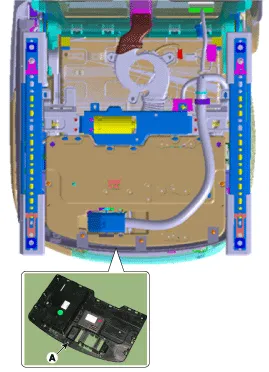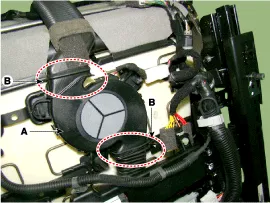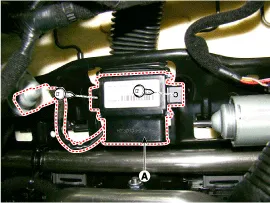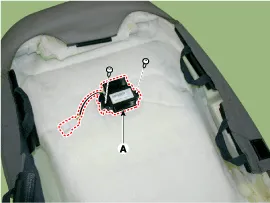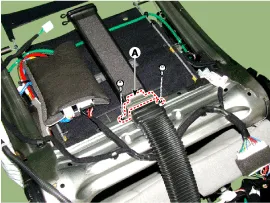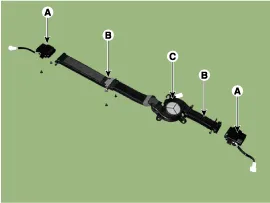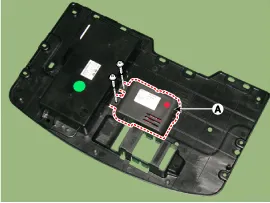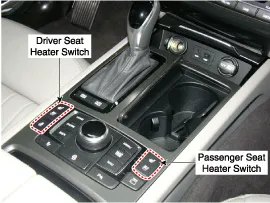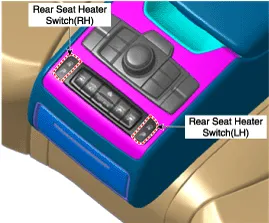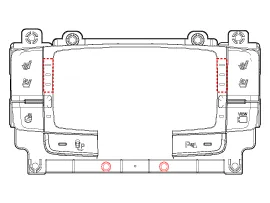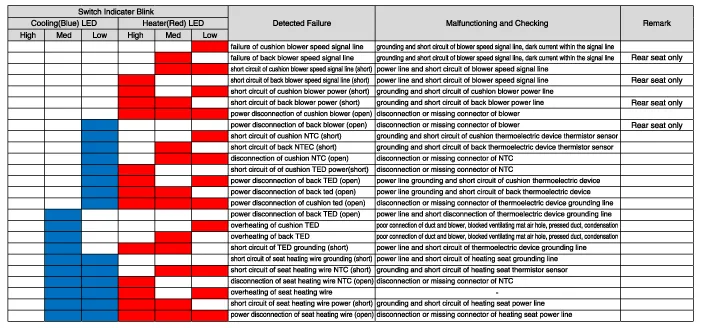Hyundai Genesis (DH): Seat Electrical / Climate Seat Unit Repair procedures
| Removal |
| 1. |
Disconnect the battery(-) terminals. |
| 2. |
Remove the front seat.
(Refer to Body - "Front Seat Assembly" ) |
| 3. |
Remove the front seat undercover (A) after loosening the mounting screws.
|
| 4. |
Remove the blower fan (A) after disengaging the retaining clips and mounting clip from the front seat cushion.
|
| 5. |
Remove the seat cushion TED (A) after loosening the screws.
|
| 6. |
Remove the front seat back board.
(Refer to Body - "Front Seat Back Board." ) |
| 7. |
Remove the TED (A) after disconnecting the connector and loosening the screw from the seat back.
|
| 8. |
Remove the duct (A) after loosening the screw and removing retaining clip from the seat back.
|
| 9. |
Remove the TED (A), duct (B) and the FAN (C).
|
| 1. |
Disconnect the battery(-) terminals. |
| 2. |
Remove the front seat.
(Refer to Body - "Front seat Assembly") |
| 3. |
Remove the front seat under cover (A) after loosening the mounting screws.
|
| 4. |
Remove the ventilation seat unit (A) after disconnecting the connector and loosening the screws.
|
| Installation |
| 1. |
Connect the connector and then install the TED and climate control system duct on the side of the seat back. |
| 2. |
Install the front seat back board. |
| 3. |
Install the blower fan by connecting it to the connector and fixed clip under the front seat cushion. |
| 4. |
Install the TED on the seat cushion. |
| 5. |
Install the front seat cushion. |
| 6. |
Install the front seat. |
| 7. |
Connect the negative (-) battery terminal. |
| 1. |
Install the climate control system seat unit after connecting the connectors. |
| 2. |
Install the front seat. |
| 3. |
Connect the negative (-) battery terminal. |
| Inspection |
| 1. |
When a displaying lamp blinks indicating malfunctioning, you can refer to the following table for maintenance.
[Front Seat]
[Rear Seat]
[Failure Indicator Switch]
|
Description Comparing with the seat heat function by the existing thermic rays, Climate Control Seat functions the heating, cooling, dehumidifying by using TED.
Component Location Air lumbar support & bolster assembly Mechanical lumbar support assembly
Other information:
Hyundai Genesis (DH) 2013-2016 Service Manual: Rheostat Repair procedures
Inspection 1. Disconnect the negative (-) battery terminal. 2. Remove the crash pad lower panel. (Refer to Body - "Crash Pad Lower Panel") 3. Remove the lower crash pad switch assembly (A) after disengaging the mounting clip. 4. Remove the rheostat switch connector (A).
Hyundai Genesis (DH) 2013-2016 Service Manual: Auto Light Sensor Repair procedures
Removal 1. Disconnect the negative (-) battery terminal. 2. Remove the photo & auto light sensor. (Refer to Windshield Wiper/Washer - "Rain Sensor") Installation 1. Install the auto light sensor. 2. Connect the negative (-) battery terminal.
Categories
- Manuals Home
- Hyundai Genesis Owners Manual
- Hyundai Genesis Service Manual
- Brake System
- Emission Control System
- Engine Mechanical System
- New on site
- Most important about car

